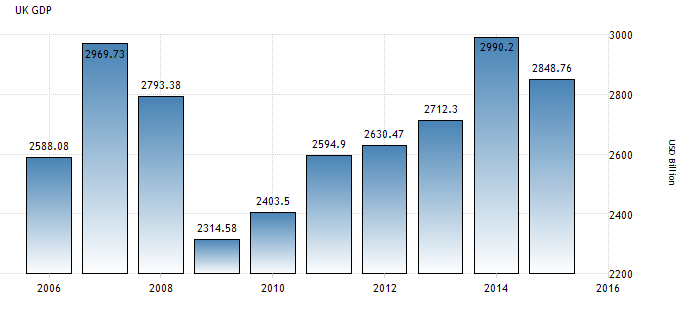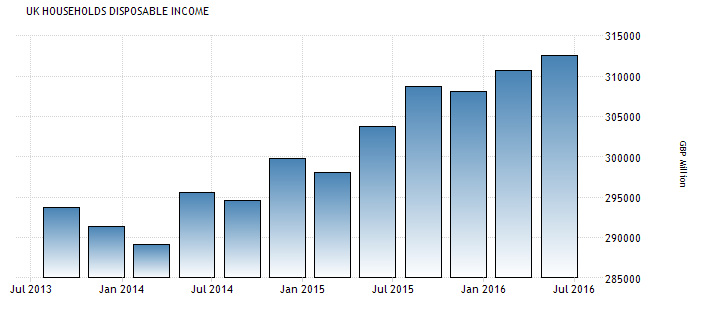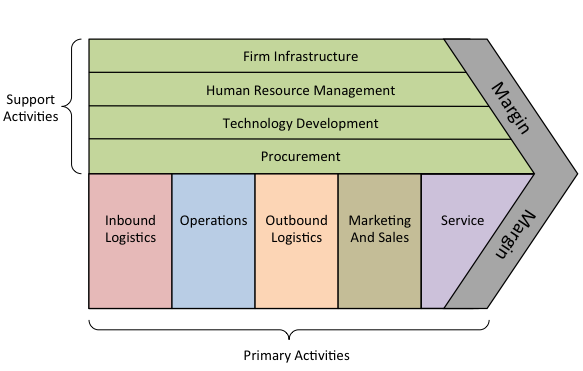Table of Contents
Introduction
Samsung is a South Korean company operating in the conglomerate industry. The organisation comprises of wide array of subsidiaries. Samsung was founded in 1938 by Lee Byung-chul. In the last three decades, the company has diversified into multiple segments comprising of textiles, retail, food processing, insurance, etc. Samsung has emerged as a world-class corporation by establishing their brand name in distinct business areas, i.e. Mobile and IT Communications, Consumer Electronics and Device Solution.
The major products offered by the company are consumer electronics, apparel, electronic components, chemicals, semiconductors, medical equipment and telecommunication equipment. On the other hand, the main services provided by the company are entertainment, advertising, financial services, construction, healthcare and medical services, information and communications technology, shipbuilding and retail. The business processes of the brand are mainly centred towards expanding in the consumer electronics division by offering innovative designs and exceptional technology (Samsung, 2016). There are more than 78 different firms operating under the Samsung brand. It can be stated that active collaboration with suppliers and customers has enabled the group to exhibit their business activities properly.
Macro-environment analysis
The macro-environment factors prevailing in the home country of Samsung is completely different from that of U.K. PESTEL analysis has been conducted in order to better understand the external factors which positively or negatively influence the business activities of a company operating in U.K. It is evident that U.K. is a constitutional monarchy and relatively a stable economy. U.K. is often classified as a stable and fair country that provides enormous opportunities to any company planning to expand in this particular geographical region. Hence, business operations of Samsung are not subjected to any kind of political intervention. Appendix 1 (a) & (b) elaborates on the current economic position of U.K. The country has the 5th highest GDP in global context. U.K. is basically a diversified economy which encompasses both large private and public sectors (Trading Economics, 2016a). However, the negative economic factor is that a slow recovery has been witnessed in U.K. since 2008 economic recession. On the other hand, high social standards of the country can be regarded as a growth opportunity for many firms operating in this region. U.K. is a densely populated country and has eventually become a cosmopolitan environment due to increasing presence of migrants. A large base of cheap workforce is easily accessible by the company because of U.K.’s social norms. Arguably, in social context, one of the negative factors which can adversely affect business activities of Samsung is social unrest surrounding ethnic and migration groups. The high standard of living in U.K. also can be regarded as a challenge for Samsung in terms of maintaining product quality and consistently offering innovative solutions. As an economically developed country, U.K. has greater access to wide array of technology. It can be claimed that technology based firms such as Samsung would not encounter problems to survive in this market due to presence of quality innovation skills, effective legislation in relation to intellectual property, expertise in IT and science, and intense internal competition so as to trigger growth (Hautz, Mayer and Stadler, 2014). The legal framework of U.K. strictly governs business operations being conducted in this region. For instance, there are laws established for copyright infringement, employment regulations, customer complaints, etc. To a great extent, the company complies with U.K. while performing business operations. In environmental context, green practices are basically preferred by the U.K. government. For example, the Environmental Protection Act 1990 has set desirable limits on emissions, so as to regulate the level of pollution. There are other regulations as well such as Energy Act 2008, Climate Change Act 2008, etc. which have influenced the company to work collaboratively with suppliers and supply chain partners in order to provide environmental friendly products or services.
Analysis of primary activities
Samsung encompasses wide range of subsidiaries. In the U.K. market, the company is mainly focused on offering electronic goods. Porter’s Value Chain will help in further identifying the key primary activities exhibited by the company. Appendix 2 highlights the primary activities performed by business organisations in the marketplace. The inbound logistics deals with the initial phase of supply chain i.e. procurement. In case of Samsung, strategic partnership with suppliers is a key to their business success. It can be stated that approximately 79% of Samsung’s suppliers are based in Asia. The availability of cheap labour has encouraged the company to retain supplier base in Asia. 4.4% of the suppliers are also based in Europe, thus making it convenient for the company to exhibit operations in the U.K. market. On the contrary, there are numerous logistics firms which are efficiently owned by the organisation so as to regulate inbound logistics operation. There are around 8,600 employees who work on a contractual basis for completing tasks related to inbound logistics. The purchasing emblem is based on the concept of creating a win-win ideology in case of valuable suppliers and the company. As per the value chain model, “operations” is one of the important primary activities.
In current scenario, the company possesses approximately 213 global operational hubs. These hubs generally include research and design centres, sales subsidiaries and various other subsidiaries. There are around 15 regional headquarters for effectively controlling the diverse business operations of Samsung. For instance production centre of Samsung goods in U.K. always need to be closely synchronised with any of the global R&D centres. In entire Europe, the total production base of the company is 3, whereas, there is only one design centre. Hence, strong coordination between departments is the preliminary requisite of the company. The overall business operations of the company are based on six sigma methodology (Park, Shintaku and Hong, 2015). Outbound logistics represent how the final goods or services are being offered to the end users. Apple Inc. can be regarded as the major rival firm of Samsung. On the basis of innovation, Apple Inc. has been able to acquire desirable market share. However, the degree of supply chain responsiveness is relatively higher in case of Samsung. The company is efficient enough to quickly launch new products for addressing any rising consumer market demand.

Samsung’s success in U.K. is somewhere based on their outbound logistics. An enterprise logistics management agent has been hired by the company to address varying logistics needs. The agent is solely responsible for conducting global outbound logistics operations of Samsung. On behalf of the company, the agent is liable for handling insurance claims and negotiating payments. Transportation activities also form a major component of outbound logistics ensuring that the company’s products are delivered on time to customers. There are two critical aspects to be taken into account in context of outbound logistics, i.e. regulating stock level and reducing lead time (Porter and Heppelmann, 2014). The primary activities also include marketing and sales which aims at driving attention of target market towards the brand’s products. It can be stated that the marketing budget of Samsung has always been higher than other rival firms. The company mainly allocates the budget to media and print advertising, public relation programmes and various events. Traditional marketing channels have always been highly preferred by the management. Arguably, digital marketing channels or modern marketing communication tools such as social media can be stated as the best possible medium to stay connected with the target audience. Brand visibility is expected to arise with the support of varying social media platforms. “Service” is another important component of the value chain model. There are different strategies being adopted by the company in order to enhance level of customer satisfaction. External parties are hired by the company to collect customer feedback on offered products or services. The company extends their customer service support to each area of their business operations. The management even guarantees to address customer complaints or queries within a span of 24 hours.
Business process improvement by deploying IT
The supply chain of Samsung is highly effective in relation to product launch and product distribution. However, analysis of Samsung’s primary activities clearly signifies that IT integration at each of their business stages is essential so as to ensure there is no such repetition of tasks. For instance, the R&D centres of the company are located in diverse geographical areas. Hence, it is necessary to deploy IT within the system so that critical information collected and analysed by one of the R&D centres is efficiently communicated across other global centres. An innovative platform can be designed by the company so that employees working in respective business units are knowledgeable about the current market information and recent facts of any product launch. Business process can also be enhanced through incorporating IT within inbound and outbound logistics operations. To be more precise, Samsung has been able to establish a strong brand position in the U.K. market because of their quick product launch and development of more customer-centric products or services. Thus, inventory or stock keeping with the support of IT specialised tools can help in reducing inventory carrying costs. For example, IT deployment would enable the operations department to keep a consistent track of fast moving and slow moving goods. On the basis of such specialised software, it would be easier to segregate between products. At a later phase, such stock keeping records can be combined with customer demand in order to determine the main customer pain points. It can be claimed that a company can gain competitive position through thinking ahead of other competitors. The company needs to customise inventory keeping software for overcoming the issues of excess inventory and stock-out scenario.
Business processes not only involve logistics, but marketing activities also form a major constituent. In current scenario, it is observed that Samsung invests desirable amount in common marketing communication channels. From future perspective, traditional channels are not suitable for improving current brand position. IT also needs to be deployed in marketing activities in terms of increasing frequency of using cost-effective social media platforms. Social media can be used to launch interactive advertisement campaigns or can even serve as a platform for collecting innovative ideas given by customers. A direct communication channel always proves to be beneficial for a company because it provides the scope to interact with customers for understanding their hidden wants which have not yet been addressed by other players. Competitive advantage is gained by a company when customer-centric approaches are successfully integrated within business process. The business can also focus on integrating IT in the sales department. It is a common assumption that sales department is only actively indulged in generating leads and completing sales. However, IT based platform can be used to analyse the trend of customer data along with market preference in the last few years. The data collected can then be communicated to global R&D centres so as to enable team members to structure appropriate sales strategy (Jung, 2014). In overall context, installing IT would help in establishing coordination between organisational departments. An effective synchronisation would ensure no loss of critical data. Thus, minimum time will be wasted to retrieve information or make team members knowledgeable about any advancement in the business process. As stated in the above analysis section, lead time reduction should be the primary area of concern for any organisation operating in a competitive marketplace. IT integration would reduce overall lead time by initiating faster execution of supply chain activities.
Conclusion
From the above study, it can be derived that there is a close relationship between technology advancement and gaining competitive advantage. Samsung can successfully continue operating in U.K. and other global markets if measures are undertaken for including IT based tools. The aspect of delivering prompt customer service requires a well-integrated team and advanced technological support. Deploying IT would indicate bringing forth a synchronisation between different departments. Samsung can remain competitive in the marketplace by using IT based tools for accomplishing business related goals. The integration of IT provides an opportunity for efficiently meeting set targets.
Appendices
Appendix 1 (a): GDP of U.K.

(Source: Trading Economics, 2016a)
Appendix 1 (b): U.K. household’s disposable income

(Source: Trading Economics, 2016)
Appendix 2: Porter’s Value Chain

(Source: Porter and Heppelmann, 2014)
- Hautz, J., Mayer, M. and Stadler, C., 2014. Macro-competitive context and diversification: the impact of macroeconomic growth and foreign competition. Long Range Planning, 47(6), pp.337-352.
- Jung, S.C., 2014. The analysis of strategic management of Samsung electronics company through the generic value chain model. International Journal of Software Engineering and Its Applications, 8(12), pp.133-142.
- Park, Y.W., Shintaku, J. and Hong, P., 2015. Effective supply chain integration: case studies for Korean global firms in China. International Journal of Manufacturing Technology and Management, 29(3-4), pp.161-179.
- Porter, M.E. and Heppelmann, J.E., 2014. How smart, connected products are transforming competition. Harvard Business Review, 92(11), pp.64-88.
- Samsung. 2016. Values & philosophy. [Online] Available at: <http://www.samsung.com/us/aboutsamsung/samsung_group/values_and_philosophy/> [Accessed 17 October 2016].
- Trading Economics. 2016. United Kingdom households disposable income. [Online] Available at: <http://www.tradingeconomics.com/united-kingdom/disposable-personal-income> [Accessed 17 October 2016].
- Trading Economics. 2016a. United Kingdom GDP. [Online] Available at: <http://www.tradingeconomics.com/united-kingdom/gdp> [Accessed 17 October 2016].
